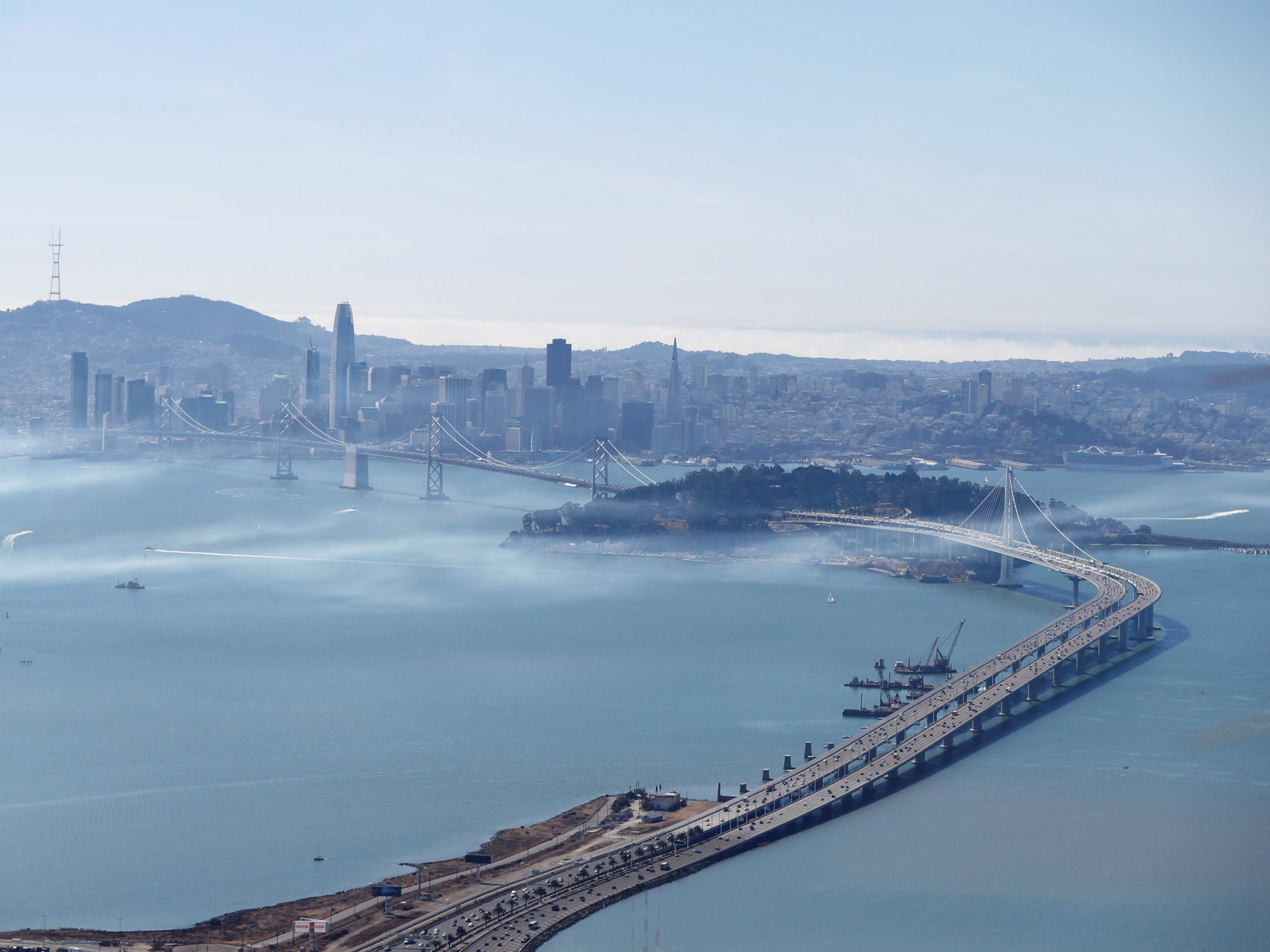Sea level rise could be even worse for San Francisco than previously thought
Coastal cities in California and Florida are especially vulnerable to climate change

Your support helps us to tell the story
From reproductive rights to climate change to Big Tech, The Independent is on the ground when the story is developing. Whether it's investigating the financials of Elon Musk's pro-Trump PAC or producing our latest documentary, 'The A Word', which shines a light on the American women fighting for reproductive rights, we know how important it is to parse out the facts from the messaging.
At such a critical moment in US history, we need reporters on the ground. Your donation allows us to keep sending journalists to speak to both sides of the story.
The Independent is trusted by Americans across the entire political spectrum. And unlike many other quality news outlets, we choose not to lock Americans out of our reporting and analysis with paywalls. We believe quality journalism should be available to everyone, paid for by those who can afford it.
Your support makes all the difference.A large swathe of the San Francisco Bay Area will become especially susceptible to flooding as climate change pushes sea levels higher, while subsidence causes land levels to drop, according to a new study.
Previous research has already established that densely inhabited coastal areas are at risk as sea levels rise, a phenomenon that shows signs of accelerating.
But a study conducted by scientists from Arizona State University and the University of California, Berkeley found the effects of rising waters will be magnified in parts of the Bay Area where the land is also sinking.
Subsidence is in part a function of geology, with areas built on landfill more prone to sinking. But it can be exacerbated by pumping groundwater - an issue California contended with in recent years when a withering drought drove a spike in the number of new wells being drilled.
When taking into account sinking land, the authors found, a much larger area is at risk of ending up underwater. The area at risk jumps from between 51 and 413sq km to between 125 and 429sq km. Among the locations at elevated risk are San Francisco’s international airport, Foster City and Treasure Island.
Areas that face being inundated could deal with “unprecedented socioeconomic impacts”, the authors warned. They pointed to the powerful hurricanes that battered areas from Houston to Puerto Rico last year, bringing “unprecedented flooding”.
“Storm intensity, associated rainfall, and storm surges affecting the coastal area were likely amplified by the elevated ocean temperature caused by ongoing global climate change”, they wrote.
Exposure will likely only increase in coming years, the authors warned, noting that number of people worldwide living in areas at risk of is expected to triple in the coming decades and cautioning that many “coastal megacities” are “located in river deltas and lowlands subject to subsidence”.
“Flooding from sea level rise is clearly an issue in many coastal urban areas”, author Roland Bürgmann told UC Berkeley. “This kind of analysis is probably going to be relevant around the world, and could be expanded to a much, much larger scale.”
Join our commenting forum
Join thought-provoking conversations, follow other Independent readers and see their replies
Comments